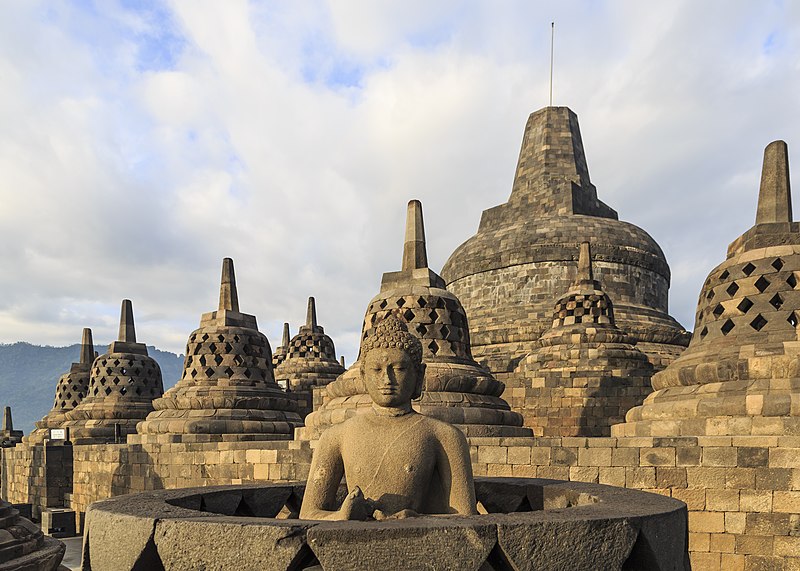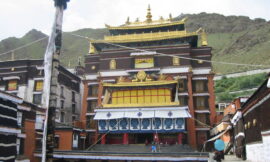Nestled amidst the lush landscapes of Central Java, Indonesia, Borobudur stands as a testament to the ingenuity, artistry, and spiritual devotion of the ancient civilizations that once thrived in the region. This magnificent Buddhist temple, designated as a UNESCO World Heritage site, is celebrated as one of the greatest monuments of Mahayana Buddhism and a masterpiece of Southeast Asian art and architecture.
Historical Significance: Constructed in the 9th century during the reign of the Sailendra dynasty, Borobudur represents the pinnacle of Buddhist architecture and religious symbolism in Java. Built as a pilgrimage site and spiritual sanctuary, the temple complex served as a center of Buddhist worship and meditation for centuries before being abandoned and forgotten, only to be rediscovered and restored in the 19th century by Dutch colonial authorities.
Architectural Marvel: Borobudur is renowned for its distinctive design, which combines elements of stupa, mandala, and labyrinth to create a monumental structure of unparalleled beauty and complexity. The temple consists of nine stacked platforms, crowned by a central dome and surrounded by 72 perforated stupas, each containing a seated Buddha statue. The walls and balustrades of Borobudur are adorned with intricate bas-reliefs and carvings that depict scenes from Buddhist cosmology, teachings, and Javanese daily life.
Spiritual Symbolism: At its core, Borobudur is a symbolic representation of the Buddhist path to enlightenment, with each level of the temple complex representing a stage of spiritual development and awakening. Visitors to Borobudur are invited to embark on a symbolic journey through the realms of desire, form, and formlessness, culminating in the attainment of nirvana at the temple’s apex. The monument’s circular design and ascending pathways are believed to facilitate meditation and contemplation, guiding pilgrims on a transformative journey of self-discovery and enlightenment.
Cultural Heritage: Borobudur is not only a religious site but also a cultural treasure that holds immense significance for the people of Indonesia and the world. The temple complex serves as a symbol of Indonesia’s rich cultural heritage and religious diversity, attracting visitors from far and wide who come to marvel at its beauty and learn about its history. Borobudur’s status as a UNESCO World Heritage site underscores its universal value and importance as a cultural landmark of global significance.
Conservation and Preservation: Over the years, Borobudur has faced numerous challenges, including natural disasters, environmental degradation, and the effects of tourism. However, concerted efforts by the Indonesian government, international organizations, and local communities have helped to preserve and protect this iconic monument for future generations. Ongoing conservation projects aim to safeguard Borobudur’s structural integrity, restore its artistic features, and ensure its continued relevance as a sacred and cultural site.
Visitor Experience: Today, Borobudur welcomes visitors from around the world, eager to explore its labyrinthine corridors, intricate carvings, and panoramic vistas. Guided tours, cultural performances, and multimedia exhibits provide insights into the temple’s history, architecture, and spiritual significance, allowing visitors to deepen their understanding of Buddhism and Indonesian culture. Sunrise and sunset views from Borobudur’s upper levels are particularly popular, offering visitors a breathtaking panorama of the surrounding landscapes and volcanic peaks.
Conclusion: In conclusion, Borobudur stands as a timeless masterpiece of Buddhist art and architecture, a testament to the enduring legacy of Indonesia’s ancient civilizations. With its profound spiritual symbolism, exquisite craftsmanship, and universal appeal, Borobudur continues to inspire awe and wonder in all who visit, serving as a beacon of enlightenment and a symbol of peace, harmony, and cultural unity for generations to come.



